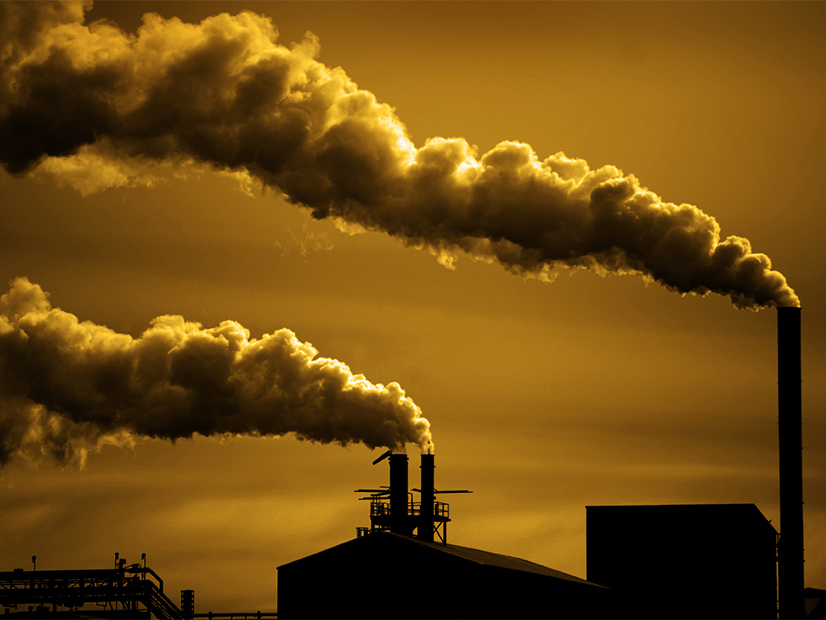In a 5-4 decision on June 27, the U.S. Supreme Court issued an emergency pause on the implementation of EPA’s “Good Neighbor Plan,” which is aimed at reducing ozone pollution, a key component in the creation of smog.
The plan stems from a 2015 update of ozone air quality standards. Based on these tightened standards, EPA ruled in 2023 that 23 states had not submitted adequate plans to prevent harmful levels of pollution flowing to downwind states.
Lower courts already had temporarily paused the plan’s implementation in 12 states, and the Supreme Court sided with a coalition of Republican-led states, along with industry groups, in its ruling that the EPA likely has not justified the applicability of its plan to a smaller subset of states than initially proposed. (See Supreme Court Skeptical of EPA’s Good Neighbor Plan.)
The legal challengers included Ohio, Indiana and West Virginia, along with Kinder Morgan, the American Forest and Paper Association, and U.S. Steel.
The opponents contended that the emissions-prevention measures required by the plan are contingent on the states included in the plan, and therefore the exemption of one or more of the states invalidates the cost-benefit analysis the rule was based on.
Responding to this argument, EPA said the plan’s requirements are independent of the other states included.
Justice Neil Gorsuch — joined by Chief Justice John Roberts and Justices Brett Kavanaugh, Clarence Thomas and Samuel Alito — wrote that a stay on the plan is warranted because its opponents “are likely to prevail on their argument that EPA’s final rule was not ‘reasonably explained.’”
“EPA did not address whether or why the same emissions-control measures it mandated would continue to further the [Federal Implementation Plan’s] stated purpose of maximizing cost-effective air-quality improvement if fewer states remained in the plan,” Gorsuch wrote, adding that the 12 states already excluded from the plan account for most of its targeted emissions.
Justice Amy Coney Barrett broke with her fellow conservatives on the court to author the dissent, supported by the court’s three liberal justices. She said the majority based its decision on “an underdeveloped theory that is unlikely to succeed on the merits.”
Barrett noted that none of the 23 states proposed to take any action to reduce ozone emissions to comply with the 2015 regulations, and because no state has been permanently exempted from the plan, it “may yet apply to all 23 original states.”
She added that the Good Neighbor Plan does consider differences between states when establishing state-specific emissions budgets; that EPA relied on national data when setting the rule’s emissions limits; and that the agency “did not depend on the number of states in the plan.”
Fossil fuel and industry groups applauded the decision, arguing that the plan would hurt grid reliability and increase electricity costs in the affected states by driving coal plants into retirement.
“We are pleased that the court recognized the immediate and irreparable harm this rule would do to utilities and ratepayers,” Michelle Bloodworth, CEO of the coal lobbying group America’s Power, said in a statement.
Bloodworth called the rule “yet another example of EPA overreach,” and expressed her hope the courts will permanently strike down the rule.
Jim Matheson, CEO of the National Rural Electric Cooperative Association, said the decision “directly speaks to the gravity of EPA’s unlawful ozone transport rule which directly threatens the American economy and way of life.”
Meanwhile, climate and environmental advocacy groups said the court’s ruling will have major climate and public health consequences.
Conservation Law Foundation President Bradley Campbell told RTO Insider that the rule is “another example of the Supreme Court’s new majority using its ‘emergency powers’ to obstruct EPA rules it doesn’t like.”
“This is going to directly impact the health and life expectancy of communities in downwind states that historically have been overburdened by pollution,” Campbell said. “It’s clear that the new Supreme Court majority is going to use every tool at its disposal either to overturn or at least significantly delay new EPA protections and safeguards, and that’s going to result in a lot more illness and premature death.”
The decision comes as the Supreme Court appears poised to overturn or significantly roll back the Chevron doctrine, which directs courts to defer to the reasonable judgment of regulatory agencies in the absence of clear direction from Congress. (See Supreme Court Hears Oral Arguments on Overturning Chevron and Energy Lawyers Debate the Impact of Losing the Chevron Deference.)



